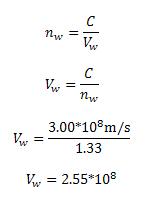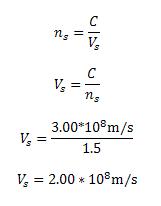Demonstrations in Optics
Index of Refraction Using Sugar Solution in Water
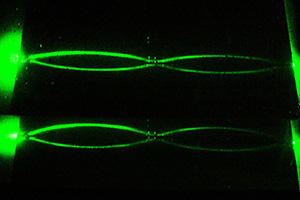
Figure 1: The sugar solution causes the laser light to bend, and the mirror reflects the light upward.
Images
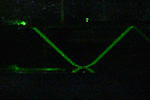


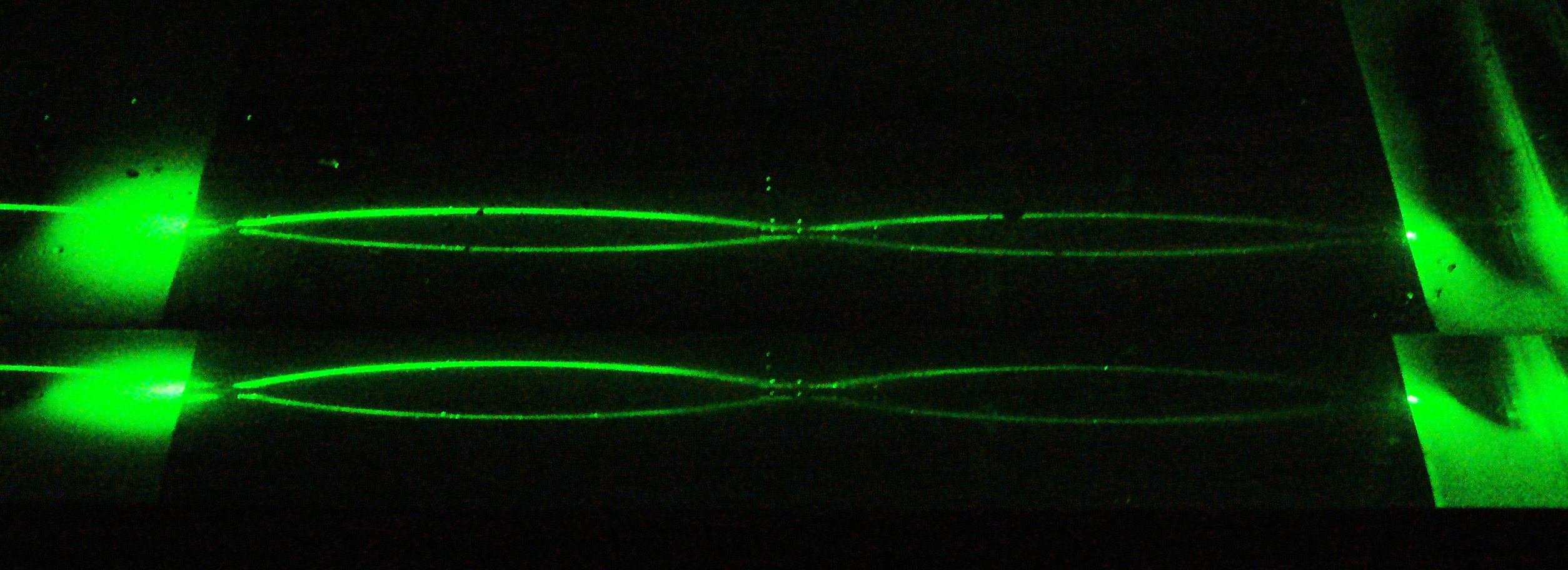
Figure 2: The sugar solution bends the laser light, and the mirror reflects the light. A mirror image can also be seen.
Explanation
The Index of Refraction is defined by Snell's Law which is:
Where 'n' is the index of refraction, and theta (θ) is the angle from the normal.
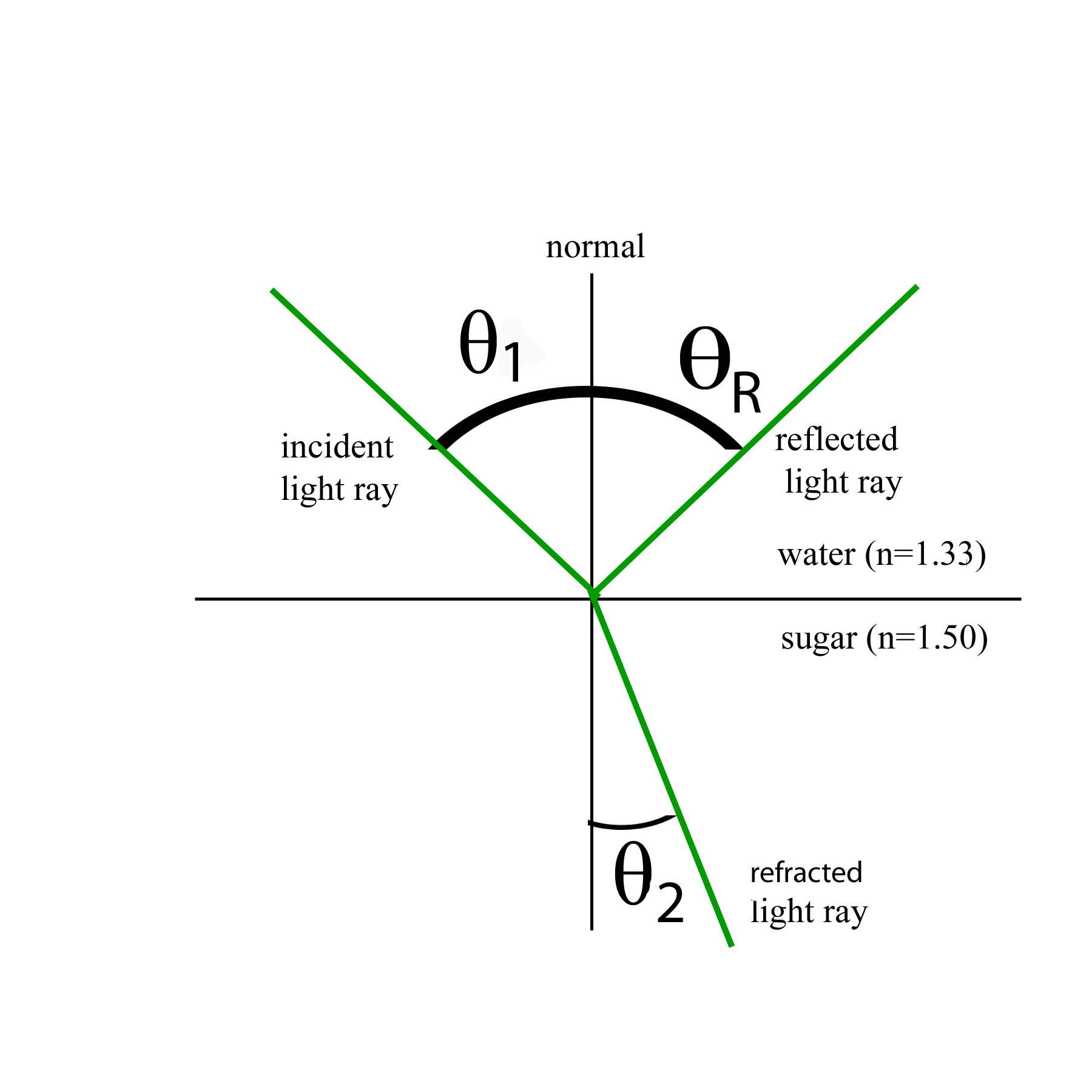
Figure 3: Light will bend through a change in medium, as well as reflect. θ1 and θ2 represent the index of refraction.
In this demonstration, the sugar water is not evenly distributed. There is a higher concentration, about 80% sugar at the bottom while there is nearly pure water near the top. The index of refraction for 80% sugar solution is known to be about 1.5, while water is 1.33. The index of refraction (n) is a number with no units.

Fig4: The the sugar solution is more concentrated at the bottom of the aquarium, which creates a gradient of the indices of refraction.
The sugar does not dissolve at a constant gradient. There are differences in each direction, due to reasons including uneven sugar distribution, a difference of temperature outside of the water, and convection outside of the tank. It is therefore difficult to tell what the index of refraction is at any given point. The change in angle would need to be looked at, and applied to Snell's Law.
The beam of light jumps multiple times because the light reflects off of the mirror at the bottom of the tank. The angle of reflection will equal the angle of incidence (the angle at which the light is going into the new medium).
The speed of light is different for different mediums, and it can be found using the index of refraction.

| variable |
meaning |
| n |
index of refraction |
| C |
Speed of Light in a vacuum or air |
| V |
Speed of light in the medium observed |
Since C= 3.00x108 m/s, and the indexes of refraction are known, the speed of light in water and sugar water can be found.
In water:
80% Sugar Solution:
Therefore the solution will slow light down 5.5x107 m/s through the solution, or 1x108 m/s compared to light in a vacuum (or air).
Materials
- aquarium (about 5 gallon)
- Water (5 Liters)
- Sugar (2.5 pounds)
- Mirror to fit in tank
- Mirror cutters (optional to cut mirror)
- Green laser
Procedure
- If necessary cut the mirror so it will fit into the bottom of the tank.
- Layer the bottom of the tank with about two and a half pounds of sugar, spread it as evenly as possible.
- Add four liters of water over the sugar. Pour it so it spreads out over the side of the tank so that it does not shift the sugar too much.
- Let the tank sit over night, until the water dissolves. You should be able to see the light bend within a few hours, however it will not 'bounce' off the mirror until the mirror is clear.
- If necessary add more water.
- Shine a green laser through the side of the tank, and observe what happens.
- A tank of mixed sugar water is useful for ray tracing. Place mirrors or lenses in the tank and shine a laser through it. This can work with as little as two cups of sugar dissolved into three liters of water.
Notes
- The mirror does not need to cover the entire bottom of the tank, however it should cover most of the center.
- Try not to disturb the water. This will cause the sugar to become more evenly distributed.
- A smaller or larger tank can be used, however the amounts of sugar and water will need to be adjusted.
- Karo Syrup (Corn Syrup) can be used instead of sugar.
- The solution is extremely sticky, be careful when disposing it down the sink.
- If the room is dusty, the tank will collect dust and over time it will be harder to see the laser beam. It may be necessary to put a lid over the tank.
- Mirror tiles can be bought at hardware stores for about $10.00 for six tiles.
- All measurements are approximations. This may work with significantly less surgar, however the light will not bend as drastically.
References
Demonstrations in Optics









